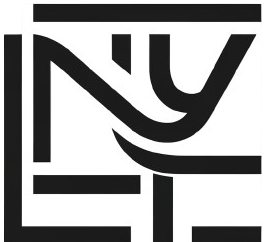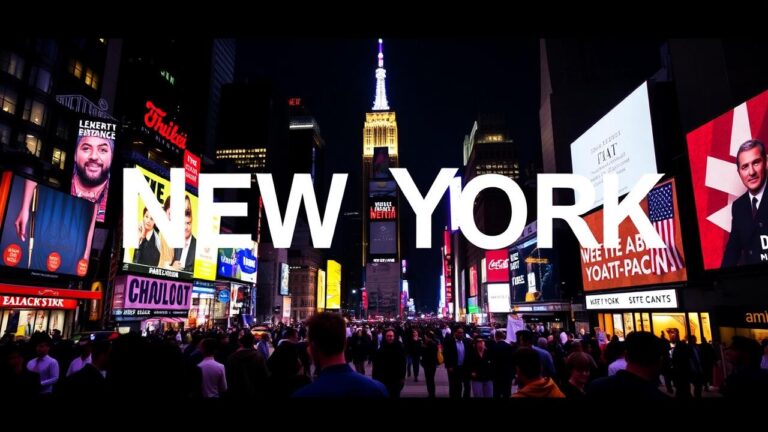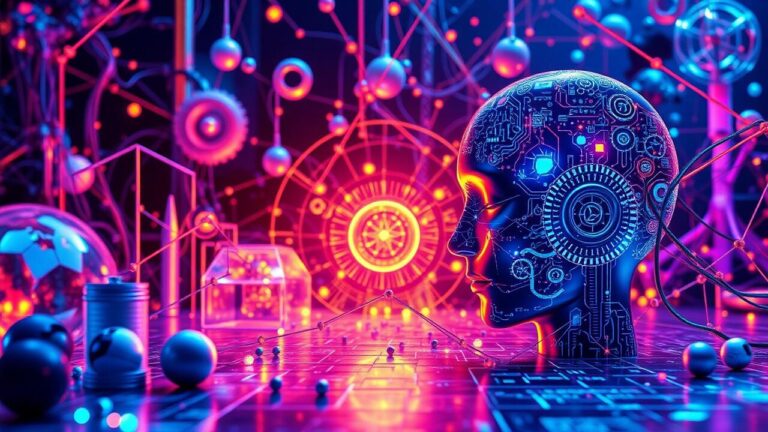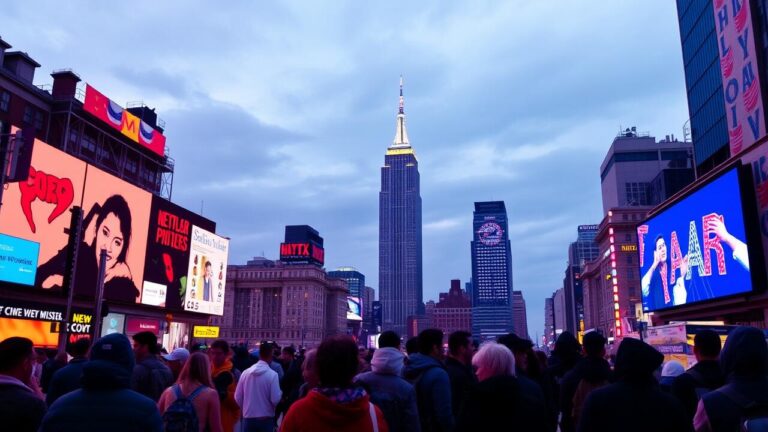Interactive Art: Engaging the Viewer in the World of Digital Creations
Table Of Contents
Interactive Art: Engaging The Viewer In The World Of Digital Creations | Exploring Interactive Art and How It Engages the Viewer in the World of Digital Creations
Key Takeaways
- Immersive creations captivate participants through dynamic engagement in digital realms.
- The progression of participatory artistry showcases advancements and shifts in creative expression.
- Technological innovations play a crucial role in enhancing the interactive experience for audiences.
- Investigating installations reveals the diverse approaches and concepts within participatory artworks.
- Illustrations of interactive artistry highlight various forms and methods of audience involvement.
Interactive Art: Engaging The Viewer In The World Of Digital Creations | Understanding Interactive Art
Interactive art serves as a bridge between traditional visual art and emerging digital creations, captivating audiences through engaging experiences. This art form challenges the conventional boundaries of creativity, merging elements of digital artwork, interactive design, and storytelling. The history of interactive art reflects a vibrant evolution, showcasing the contributions of digital artists who push the limits of modern art. Contemporary interactive installations often feature digital paintings, sculptures, and performances that allow viewers to participate in the artistic process, transforming passive observation into active engagement. Such immersive experiences not only redefine art appreciation but also invite deeper connections between the audience and the artwork.
| Interactive Art Installation | Artist | Year | Description |
|---|---|---|---|
| 39 Clocks | Rafael Lozano-Hemmer | 2010 | A large-scale installation featuring 39 synchronized clocks that respond to audience movements, creating a dynamic visual experience. |
| The Obliteration Room | Yayoi Kusama | 2017 | An interactive installation that begins as a blank white room, gradually transformed by visitors applying colorful dot stickers. |
| Skywall | Maja Kuzmanovic | 2016 | A digital projection that responds to visitors’ movements and breathing, creating a captivating visual representation of human interaction. |
| Sound of Light | Ryoji Ikeda | 2018 | An immersive installation that pairs sound and light to create an engaging, ever-changing environment influenced by viewer presence. |
Interactive Art: Engaging the Viewer in the World of Digital Creations | Defining Interactive Art
Interactive art represents a dynamic fusion of technology and creativity, transforming the way artworks are experienced. This genre encompasses various forms, including installations, video art, and performance art, where the viewer is not just an observer but an active participant. Contemporary artists often utilize interactive media to provoke creative thinking and engage audiences on multiple sensory levels. Art galleries are increasingly showcasing these artworks, enhancing visitor experience through innovative aesthetics that invite interaction and personal engagement.
The essence of interactive art lies in its ability to break traditional boundaries of static art forms. Creative engagement through interactive installations encourages viewers to explore their own interpretations of the artwork. Graphic design elements, combined with responsive technology, create immersive experiences that challenge conventional notions of authorship and audience roles. Through this approach, interactive art fosters a dialogue between the artwork and the viewer, making it a cornerstone of contemporary media art.
The Role of the Viewer
The viewer plays a crucial role in the landscape of Interactive Art: Engaging the Viewer in the World of Digital Creations. Unlike traditional forms of art, where the interaction is primarily one-sided, digital creations invite the audience to become active participants. This shift allows viewers to influence the narrative through their choices, turning the experience into a collaborative creative process. From kinetic sculptures to generative art, the involvement of the audience adds depth to artistic expression, often incorporating elements of storytelling that resonate with various artistic movements.
Within the realm of Japanese art, multimedia projects and augmented reality games further enhance the viewer’s engagement. These modern examples transform the aesthetic experience, merging crafts with technology and often drawing on pixel art inspirations. Artists now experiment with tools that allow for real-time interaction, creating dynamic installations that elevate the traditional viewing experience. This engagement fosters a deeper appreciation for the intricacies of the artwork, highlighting the viewer’s vital role in the overall experience of Interactive Art: Engaging the Viewer in the World of Digital Creations.
The Evolution of Interactive Art
Interactive art has significantly evolved, reflecting the dynamic relationship between technology and creativity. New media artists have pushed the boundaries of traditional art forms, creating installation artworks that incorporate augmented reality, animation, and immersive experiences. Each piece invites viewers to engage with the work, transforming passive observation into an interactive art experience. The art market has responded to this shift, showcasing masterpieces that blend craftsmanship with cutting-edge technology. Graphics designers also play a crucial role in the interactive art creation process, using their skills to balance aesthetics with functionality. As an interactive art form, it captivates audiences, ensuring that interactive art remains a vital component of contemporary artistic dialogue.
Historical Context
The roots of interactive art can be traced back to early digital experiments in the 1960s and 1970s, where artists began to explore what it meant to create art that engaged the viewer dynamically. These pioneering interactive artists laid the groundwork for interactive artworks, which sought to break the traditional boundaries of art by allowing audience participation. As interactive art evolves over time, it rises to prominence in the realm of digital creations, with various interactive art forms emerging that encourage viewers to not only observe but also influence the artwork.
Innovations in technology significantly shaped the trajectory of interactive art installations. The advent of personal computing and advancements in interactive art technology facilitated new ways for artists to connect with their audiences. This evolution has seen interactive art promote engagement through immersive experiences, inviting participation in digital art projects that resonate deeply with viewers. As interactive art fosters a sense of community and collaboration, interactive artworks continue to redefine the relationship between art, technology, and the audience, further enriching the diverse landscape of contemporary art.
Influence of Technology on Art
The emergence of technology has fundamentally transformed the landscape of the art world today. Digital artists and interactive designers are now leveraging advanced tools to create captivating interactive art installations that engage viewers in unprecedented ways. This digital art revolution allows for the creation of immersive art experiences where interactive sculptures and ai-created art become essential components. As a result, art experiences are not just visual but also participatory, inviting audiences to immerse themselves in the creations around them.
Interactive art directors are at the forefront of this movement, utilizing innovative software and hardware to push the boundaries of traditional art forms. The blending of technology with artistic vision has made interactive art pleasurable for audiences, breaking down the barriers between the observer and the artwork. This shift represents a significant evolution in how we perceive and engage with art, making interactions not only a form of appreciation but also a pivotal part of the artistic narrative.
Interactive Art Technology
Technological advancements have profoundly shaped the realm of Interactive Art: Engaging the Viewer in the World of Digital Creations. This evolution has given rise to diverse artistic storytelling methods, enabling creators to transform traditional artwork into dynamic interactive pieces. Artists harness various tools and platforms to develop engaging interactive projects that resonate deeply with art enthusiasts. These interactive storytelling experiences create immersive artistic experiences, inviting viewers to participate actively in the narrative. The influence of technology has expanded the creative landscape, leading to innovative forms like interactive dance art, where movement and digital elements intertwine. Through this interplay, interactive installation artists unlock new dimensions of creativity, allowing art to bring forth an engaging and transformative experience.
- Increased accessibility for a broader audience
- Enhanced user engagement through interactivity
- New opportunities for collaboration between artists and technologists
- Integration of virtual and augmented reality in art exhibits
- Exploration of audience-generated content as part of the artwork
- Development of interactive art in public spaces to reach diverse communities
- Potential for educational applications in art and technology fields
Tools and Platforms Used
The landscape of Interactive Art: Engaging the Viewer in the World of Digital Creations has expanded significantly through the utilization of various tools and platforms. These advancements empower artists to create experiential art pieces that transform digital art spaces into immersive environments. By leveraging interactive design principles, creators can bring interactive concepts to life, allowing viewers to engage meaningfully with artworks. This playful engagement not only enhances enjoyment but also encourages sharing art within creative digital worlds.
Ai-driven art installations illustrate the innovative potential of technology in modern art contests and exhibitions. Artists harness powerful software and hardware to develop interactive experiences that captivate audiences. This form of art relies on an array of tools, from coding platforms to physical interfaces, making it accessible for a broader range of creators. As a result, interactive art becomes not just an art form, but a unique medium for designing enjoyment and connection among viewers.
The Impact of Software and Hardware
The advent of interactive technologies has transformed the artistic landscape, allowing creative individuals to explore new dimensions in their work. Through platforms like ArtStation, artists are showcasing their artistic abilities by blending digital design with interactive screens that invite viewers into their abstract creations. This shift offers a fresh perspective on one-eyed artworks, where the viewer’s engagement becomes a vital component of the experience, enhancing the interactive nature of modern art.
Software advancements also play a crucial role in shaping artistic trends within interactive art. These tools empower artistic talents to push boundaries, manifesting their artistic vision with unprecedented precision. As the digital world continues to evolve, so do the possibilities for artists to create immersive environments that resonate with audiences. The interplay of hardware and software in interactive art not only fuels innovation but also ensures that artistic expressions remain dynamic and engaging.
Exploring Interactive Art Installations
Interactive art installations serve as a dynamic intersection between technology and creativity, transforming traditional art forms into engaging experiences. These installations often feature generative artwork intertwined with interactive elements, allowing the viewer to play an active role in the creative output. As artists create within this digital landscape, they harness creative inspiration to push artistic possibilities that challenge conventional boundaries. Whether through tech-based art installations or AI-powered art installations, the art community embraces these innovative expressions. Digital exhibitions showcase how interactive art: engaging the viewer in the world of digital creations can redefine user engagement, inviting audiences to become an integral part of the artistic form itself.
Key Characteristics of Installations
Interactive installations in the realm of art showcase the dynamic interplay between the viewer and the artwork, inviting active participation rather than passive observation. These entire artworks leverage digital tools to construct immersive environments where the viewer’s actions and reactions directly influence the experience. Artists embrace their role as interactive storytellers, employing creative inputs to guide the flow of creativity. The integration of augmented reality technology enhances the digital world feel, allowing viewers to engage with the artistic process in innovative ways.
The characteristics of these installations often reflect a blend of artistic practice and technology, inviting individuals to explore various narratives through their interactions. Each piece embodies a unique creative direction, emphasizing the importance of the viewer’s engagement in shaping the outcome of the experience. This not only fosters a personal connection but also transforms the viewer into a crucial component of the artwork, emphasizing the essence of Interactive Art: Engaging the Viewer in the World of Digital Creations. The rich tapestry of digital works within these installations elucidates the creative eye and vision of the artist while prompting ongoing dialogue between the installation and its audience.
Notable Examples Around the World
One notable example of Interactive Art: Engaging the Viewer in the World of Digital Creations is the immersive art installation by a Japanese art collective known for merging digital technology with traditional artistic practices. This installation invites viewers to step into a realm where individual paintings come alive through motion and sound. It challenges the boundaries between physical art and machine creativity, allowing human creativity to flourish as participants explore their aesthetic choices within the vibrant digital landscape.
Another compelling instance is an interactive web series that places viewers in control of the narrative, blurring the lines between digital versus physical art. Artists behind this project utilize creative expression to engage audiences, transforming a passive viewing experience into an active participation. This approach not only democratizes art ownership but also enhances the visual experience, showcasing how technology can significantly elevate the impact of interactive art in today’s digital age.
Examples of Interactive Art
Interactive Art: Engaging the Viewer in the World of Digital Creations showcases a diverse array of digital installations that blend artistic expression with cutting-edge technology. Augmented reality experiences immerse viewers in captivating narratives, while projected animations transform physical spaces into dynamic masterpieces. Aspiring artists and designers leverage digital technology to create innovative NFT artwork that challenges traditional art forms. These creators push boundaries, fueling the curiosity of the creatively eager and inviting them into new digital realms. Each piece serves as a testament to the evolving relationship between art and technology, bridging the gap between the real world and the infinite possibilities of the digital universe.
Digital Installations and Experiences
Art in the digital age has transformed galleries into mind-bending spaces where visitors can engage with immersive digital installations. Interactive media producers collaborate with creative teams to design experiences that incorporate interactive interfaces and engaging audiences through exploration. These digital environments not only feature artistic expression but also animate digital elements, allowing participants to influence the artwork in real time. This dynamic interaction redefines traditional art appreciation, inviting viewers into a dialogue with the creations on display.
The rise of technology has made it possible for interactive projections and installations to thrive on digital platforms. Each experience is meticulously crafted to ensure that every interactive visit feels unique and captivating. Artists leverage a myriad of tools to create environments that challenge perceptions and invite reflection. Through these digital installations, audiences are not mere spectators; they actively partake in the art, reshaping the narrative as they engage with the pieces in profound and personal ways.
- Digital installations often use augmented reality (AR) to enhance the viewer’s experience.
- Many exhibits feature responsive elements that react to the presence or movements of visitors.
- Virtual reality (VR) is frequently employed to transport participants to entirely immersive worlds.
- Artists utilize artificial intelligence (AI) to create evolving artworks that change based on audience interaction.
- The integration of sound design in digital installations adds another layer to the sensory experience.
- Accessibility is an important focus, with installations designed to accommodate diverse audiences.
- Educational components are often included, allowing visitors to learn about the technology and concepts behind the art.
Conclusion
Interactive Art: Engaging the Viewer in the World of Digital Creations continues to redefine the relationship between art and audience. The emergence of animated logos within online galleries exemplifies this shift, as they create an engaging system that captivates viewers in unique ways. Projects like Inspire breathe life into static art, transforming it into interactive experiences that invite participation. This evolution not only enhances artistic expression but also fosters a deeper connection between the artwork and its audience, making Interactive Art a vital component of contemporary creativity.
FAQS
What are some interactive art examples that effectively engage the viewer within the art world?
Interactive art examples often include digital sculptures, vibrant murals, and various forms of interactive digital artwork. In an art gallery, these immersive pieces allow audiences to experience creativity flow and explore how interactive artwork relates to their own artistic expression. Each interactive art piece showcases the artist’s creative vision, transforming creativity and inspiring projects in mind-bending galleries. These digital art installations demonstrate how art brings together human creativity and encourages creative eager visitors through unique interactive visits.
How does interactive art influence human creativity and inspire projects in the realm of artistic expression?
Interactive art plays a significant role in influencing human creativity as it encourages the viewer’s active participation and engagement. By allowing individuals to interact with the artwork, it transforms traditional artistic expression into a collaborative experience. For instance, when an artist creates interactive installations, it not only enhances their artistic expression but also inspires projects that blend technology and creativity, leading to innovative works that resonate deeply with the audience.
How can interactive art influence the way human creativity is expressed and inspire projects in the field of artistic expression?
Interactive art—it serves as a unique medium through which human creativity can be expressed. By allowing artists and viewers to engage directly with the artwork, interactive art resides at the intersection of technology and traditional artistic methods, offering new dimensions for inspiration. In the realm of artistic expression—they push boundaries and ignite innovative ideas, leading to inspiring projects that reflect contemporary interests and technologies. Whether through installations or digital interfaces, the impact of interactive art is significant in reshaping how art is experienced and appreciated.
How can interactive art pieces be designed to inspire projects that enhance human creativity in engaging ways?
Designing interactive art pieces that engage the viewer can effectively inspire projects focused on enhancing human creativity. By incorporating elements like user participation and innovative technology, artists can create cool artwork that resonates with the audience, fostering a collaborative environment that encourages creative expression and exploration of new ideas.
How can viewers experience cool artwork in a way that enhances human creativity?
Viewers can experience cool artwork by participating in interactive art installations that encourage engagement and exploration, ultimately boosting human creativity and providing new avenues for artistic expression.
How can interactive installations provide visitors with a unique experience of cool artwork while enhancing their understanding of human creativity?
Interactive installations allow visitors to directly engage with the artwork, leading to a more profound appreciation of cool artwork. This type of engagement not only captures attention but also facilitates a deeper understanding of human creativity, encouraging viewers to explore and express their own creative ideas.
How can interactive art exhibitions showcase cool artwork and influence the viewer’s perception of human creativity?
Interactive art exhibitions can showcase cool artwork by incorporating technology that allows viewers to engage with the pieces in real-time, enhancing their appreciation of human creativity. These installations encourage participation, prompting visitors to explore their own creative boundaries while experiencing the artwork in an innovative and immersive way.
How can interactive art installations showcase cool artwork while enhancing the understanding of human creativity?
Interactive art installations can be designed to showcase cool artwork in a way that invites engagement and participation, ultimately enhancing the viewer’s appreciation of human creativity. By incorporating elements such as motion sensors, touch screens, or augmented reality, these installations allow visitors to interact with the art, creating a dynamic experience that fosters a deeper understanding of the creativity involved in the artistic process.
How do interactive art exhibitions allow viewers to interact with cool artwork while fostering an appreciation for human creativity?
Interactive art exhibitions provide an immersive experience where visitors can engage with cool artwork in unique ways, encouraging them to explore and appreciate human creativity in depth. Through hands-on elements and participatory installations, viewers gain a deeper understanding of the artistic process and are inspired to engage with art on a personal level, ultimately enriching their experience of human creativity.
In what ways can interactive art platforms feature cool artwork that enhances human creativity among viewers?
Interactive art platforms can showcase cool artwork by incorporating elements that invite audience participation, allowing viewers to engage directly with the art. This interactive approach fosters a deeper appreciation for human creativity as it encourages individuals to explore their own creative expressions through the artwork presented.







